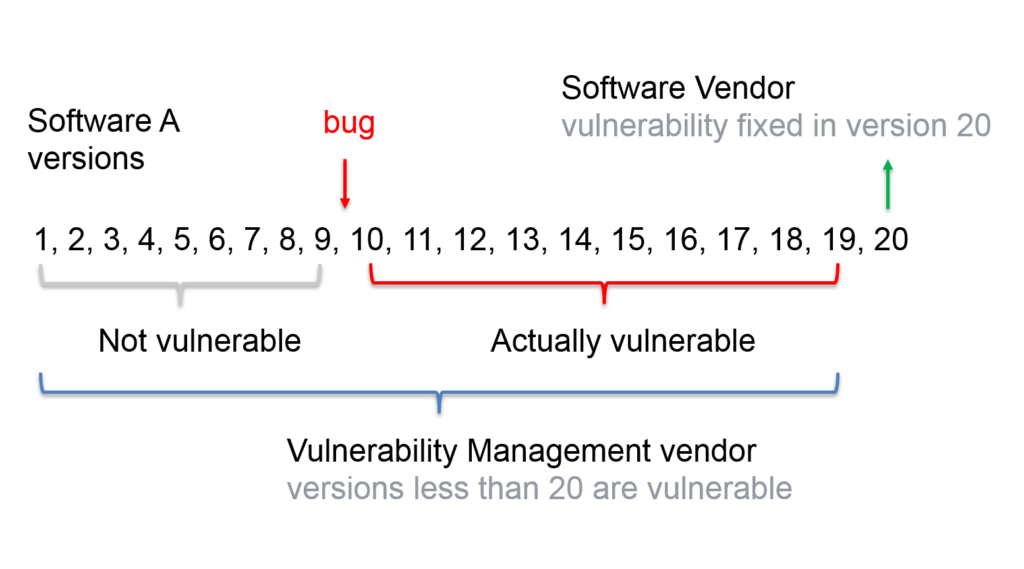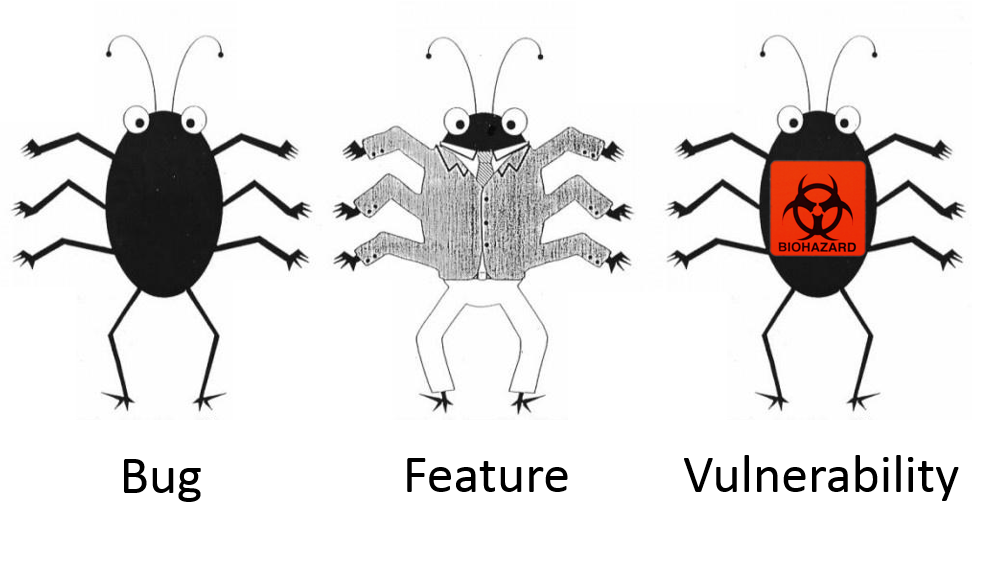It’s another common problem in nearly all Vulnerability Management products. In the post “What’s wrong with patch-based Vulnerability Management checks?” I wrote about the issues in plugin descriptions, now let’s see what can go wrong with the detection logic.
The problem is that Vulnerability Management vendors, in many cases, have no idea which versions of the Software were actually vulnerable.
OMG?! How this can be true? 🙂 Let’s take an example.
Each vulnerability at some points in time:
- was implemented in the program code as a result of some mistake (intentional or not)
- existed in some versions of the program
- was detected and fixed
Read more about this in “Vulnerability Life Cycle and Vulnerability Disclosures“.

Let’s suppose that we have some Software A with released versions 1, 2 … 20.
Just before the release of version 10, some programmer made a mistake (bug) in the code and since the version 10 Software A has become critically vulnerable. Before the release of version 20, Software Vendor was informed about this vulnerability and some programmer fixed it in version 20. Then Software Vendor released a security bulletin: “Critical vulnerabilities in the Software A. You are not vulnerable if you have installed the latest version 20.”
And what does Vulnerability Management vendor? This vendor only sees this security bulletin. It is logical for him to decide that all versions of Software A starting from 1 are vulnerable. So, it will mark installed versions 1 … 9 of the Software A as vulnerable, even so actually they are NOT.
Continue reading
